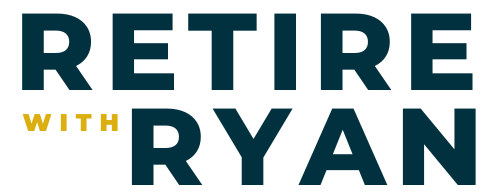Mapping Out A Plan For Roth Conversions, #279
If you’ve spent any time on social media or read personal finance blogs, you’ve likely encountered a buzz around Roth IRAs and, specifically, Roth conversions. This week I’m discussing the details of Roth conversions, what they are, how they work, and why they’re crucial for those looking to optimize their retirement finances.
Roth IRAs hold a special appeal: the promise of tax-free income in retirement. And most people would agree that having tax free income in retirement is preferable over having taxable income. Yet, for many people, especially those in their 50s and older, most of their retirement savings sit in pre-tax accounts such as traditional IRAs or 401(k)s. Roth conversions offer a pathway for transforming those tax-deferred assets into tax-free retirement income.
This episode is packed with practical insights to help you make informed decisions about your financial future. Tune in to learn more and get ready to take your retirement planning to the next level!
You will want to hear this episode if you are interested in...
[00:00] The appeal of tax-free income during retirement.
[04:43] Key rules for Roth conversions.
[08:53] Roth conversion strategies for wealth.
[11:58] Roth IRA conversion strategy.
[14:47] Roth conversion planning tips.
Breaking Down Roth IRA Conversions
A Roth IRA conversion involves moving funds from a pre-tax retirement account, like a traditional IRA or 401(k), into a Roth IRA. This process requires you to pay taxes now on the amount you convert, but it grants you future tax-free withdrawals. Anyone with pre-tax retirement funds can consider a conversion, but it’s important to understand the rules: Every time you do it, it starts a new five year holding period on the money. If you withdraw converted funds too soon, you might face taxes or penalties.
One clever strategy we’ll discuss is the Roth conversion ladder. By converting sums incrementally over several years, you gradually move money into the Roth IRA, allowing each batch to satisfy the five-year holding requirement. This helps maximize flexibility and minimize penalties if you need access in retirement.
Who Should Consider Roth Conversions?
So, who stands to gain the most from Roth conversions? Here are a few key candidates:
Those anticipating higher future tax rates: If you’re in a low tax bracket now but expect to be in a higher one later, converting at today’s lower rates can save you significant money down the road.
Anyone wishing to avoid required minimum distributions (RMDs): Roth IRAs aren’t subject to RMDs, making them valuable for those who want more control over retirement withdrawals.
Individuals aiming to leave a tax-free inheritance: Paying conversion taxes now could shield heirs from larger tax bills, especially if they’ll be in a higher bracket.
Retirees seeking flexibility: Having both taxable and tax-free buckets to draw from allows for smart tax-efficient withdrawals.
Timing is also critical. Converting in years when your income dips, due to sabbaticals, career changes, or early retirement, can dramatically lower the tax impact of conversion.
How to Calculate If a Roth Conversion Makes Sense
It’s tempting to jump into conversions, but I advise running the numbers. Consider a hypothetical: If you convert $50,000 at a 12% federal and 5.5% state tax rate, you pay $12,055 in taxes upfront. If you left the funds in a traditional IRA and paid taxes on withdrawals in retirement at a similar rate, the outcome might be similar, but if future rates rise, the Roth wins out.
The more time your converted money has to grow, the greater the tax-free benefit. And if you can pay conversion taxes from outside the retirement account, your Roth can grow even more efficiently.
Steps to Execute a Roth IRA Conversion
Ready to act? Here’s an overview of the process:
Open a Roth IRA at your provider.
Transfer funds from your pre-tax account.
Decide how much to convert and how you’ll pay the taxes (from conversion or other accounts).
Complete the paperwork.
Invest the funds, you want growth!
Report conversions on your taxes, especially using IRS Form 8606.
Roth conversions are a powerful but nuanced strategy. If you’re nearing retirement, anticipate higher future tax rates, or want flexibility and legacy benefits, it may be time to explore this option. I’d advise you to consult a financial advisor familiar with your specific circumstances before you make any financial decisions, doing so ensures your Roth conversion fits seamlessly into your broader retirement plan, maximizing tax-free growth for years to come.
Resources Mentioned
Subscribe to the Retire with Ryan YouTube Channel
